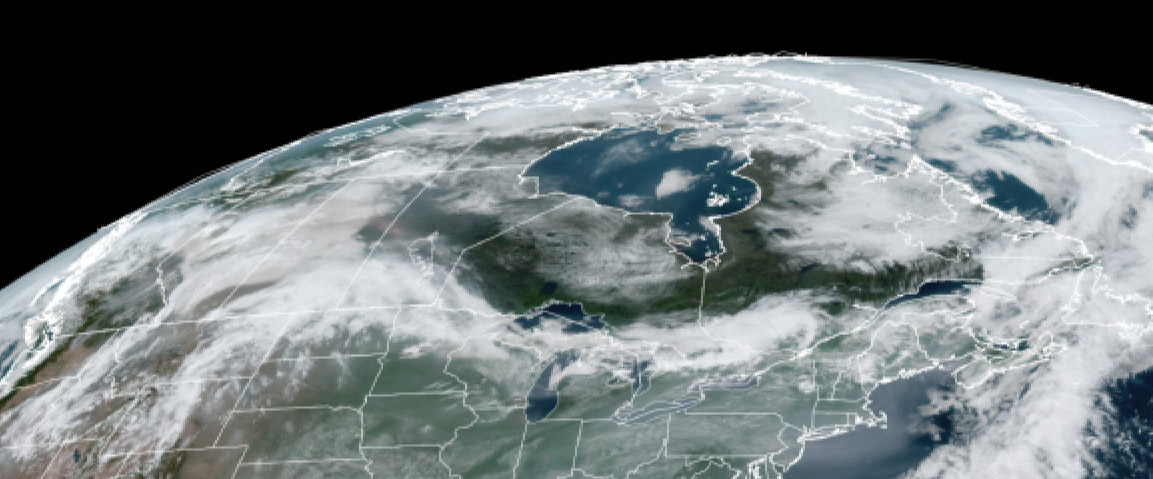What causes wildfires?
Fire experts say that with the extreme heatwaves we experienced in July, the drying of foliage that forests usually see in a month’s time happened in the span of seven to ten days. The warm weather caused trees, bushes, and forest floors to be dry, crisp, and ready to burn. In places such as British Columbia, after the heatwave, the province experienced dry thunderstorms. Because the ground is hot enough and the vegetation is dry enough, all it needs is a tiny spark from lighting to go up in flames. Fires caused by lightning represent 45% of all fires, but because they occur in remote locations and often in clusters, they represent 81% of the total area burned.
What are the impacts of wildfires?
There are hundreds of out-of-control wildfires currently burning in not only Canada but around the world, which means many people are being impacted by these wildfires in many different ways.
Forest fires increase carbon dioxide levels in the atmosphere, contributing to greenhouse effects and climate change. In addition, ashes destroy much of the nutrients and erode the soil, which can cause flooding and landslides.
Smoke = Poor Visibility and Air Quality
Environment Canada has air quality warnings in effect from British Columbia and the Northwest Territories all the way to Nova Scotia. During the last week of July, Ontario lodged the highest air pollution figure recorded since the air quality station started reporting in 2003.
What is in wildfire smoke?
Smoke from wildfires contains gases such as carbon dioxide, nitrogen oxides, and volatile organic companies. The smoke is also full of particle matter (PM2.5). PM2.5 is a composition of fine particles with diameters less than 2.5 microns, which is roughly 30 times smaller than the diameter of a human hair! On an average day in British Columbia, PM2.5 detected in the air would usually be lower than 10 micrograms for every cubic meter. On the smokiest days this summer, the PM2.5 value has hit over 300 micrograms!

Satellite Image of Smoke Over Canada Source: Regional and Mesoscale Meteorology Branch, Cooperative Institute for Research in the Atmosphere
How Smoke from Fires Can Affect Your Health
PM2.5 in the smoke can travel deep into the lungs and can cause inflammation. The inflammation can increase the likelihood of a heart attack or a stroke. Research has also shown that smoke exposure can make it harder for people with diabetes to balance their insulin levels, and can affect brain function for people who already have compromised cognitive abilities. People with underlying respiratory or heart problems are being advised to reduce their time outdoors.
Where are the wildfires burning?
Interactive Wildfire Map by the Canadian Wildland Fire Information System
Things You Can Do To Protect Yourself From Wildfire Smoke
- Avoid smoke exposure by limiting your time outside.
- Wear a face mask when spending time outdoors.
- If you have air conditioning in your home, set the system to recirculate.
- Consider air-filtration systems or portable air cleaners for your homes.
5 Facts About Canadian Wildfires That Make Us Want To Act NOW
🔥 The province of British Columbia has reported close to 500 sudden deaths caused by extreme heatwaves and wildfires.
🔥 Canada has reported over 4,300 wildfires and has lost over 142 million hectares of land so far in 2021. The average area burned is 2.5 million hectares! Some of the wildfires are so substantial that they can be seen by satellites in space.
🔥 Hundreds of thousands of people across Canada have been evacuated from their homes due to wildfires.
🔥 Billions of animals in Canada have died from wildfires in 2021. Most of these deaths go unreported because it is difficult for experts to track. While it is possible for larger mammals to escape the fires, many animals can still die from smoke inhalation.
🔥 During the last week of July 2021, Toronto was ranked second in the world among major cities for poor air pollution.
Help us restore the forest!
TreeEra has a goal to replace 1 hectare of land by replanting 1,600 trees that were burned in wildfires in Canada in 2021. Want to contribute? Click here!




